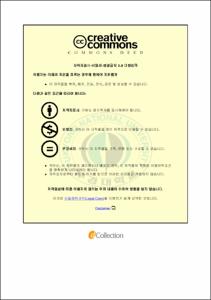Characterization and Feasibility Study of Soil Washing Process Applied to Soil Having High Uranium and Cesium Contents
- Abstract
- The physicochemical properties of soils having high uranium and cesium content, located around Duckpyungri in Korea, were investigated and lab scale soil washing experiments to remove uranium and cesium from the soil were performed with several washing solutions and on various washing condition. Typical leaching procedures such as SPLP (Synthetic Precipitation Leaching Procedure), TCLP (Toxicity Characteristic Leaching Procedure), and SEP (Sequential Extraction Procedure) were also performed to investigate the chemical properties and the degree of toxicity for uranium and cesium in the soil. The uranium concentration of the extracted solution in SPLP was higher than Drinking Water Limit of USEPA (30 ?g/L), suggesting that the continuous dissolution of uranium from soil by the weak acid rainfall generate the environmental pollution around the research area.
For the soil washing experiments, the uranium and cesium removal efficiencies of pH 1 solution for two soil samples (S3 and S7) were about 80 % and 100 %, respectively, but they dramatically decreased when pH of solution was higher than 2, suggesting that strong acidic solutions are available to remove uranium and cesium from the soil. For the uranium removal with 0.1 M HCl and 0.05 M H2SO4, their removal efficiencies at 1 : 1 of soil vs. washing solution ratio were higher than 70 %, but the removal efficiencies of acetic acid and EDTA were below 30 %. At 1 : 3 of soil vs. washing solution, the uranium removal efficiencies of 0.1 M HCl, 0.05 M H2SO4, and 0.5 M citric acid solution increased up to 88 %, 100 %, and 61 % respectively. For the cesium removal with 0.01 M HCl and 0.01 M H2SO4, their removal efficiencies at 1 : 3 and 1 : 5 of soil vs. washing solution ratio were close to 100 %, and the removal efficiencies of acetic acid were 100 % at all conditions when the ratio of soil vs. solution was greater than 1 : 3. In case of EDTA, the removal efficiency ranged from 45 to 100 %.
At appropriate washing conditions (1 : 1 ratio of the soil vs. solution, 30 minutes of washing time and five times continuous washing), the uranium content removed from the first washing was over 65 % and it decreased to about 35 % at the second washing (based on S3 soil). The cesium content removed from S7 soil during the first washing was over 100 %, suggesting that the total uranium and cesium contents extracted from 1st and 2nd soil washing were close to 100 % of the initial contents in soil. After five times consecutive washing, TOC (Total Organic Contents) and CEC (Cation Exchange Capacity) for S3 and S7 soil were also measured. Their XRD (X-Ray Diffraction) and XRF (X-Ray Fluorescence) results were also compared to those of S3 and S7 soil before soil washing. Results suggested that the additional soil reclaimant may need to improve washed soils for the cultivated plants and further usage.
- Issued Date
- 2010
- Awarded Date
- 2010. 2
- Type
- Dissertation
- Publisher
- 부경대학교
- Files in This Item:
-
-
Download
 Characterization and Feasibility Study of Soil Washing Process Applied to Soil Having High Uranium a.pdf
기타 데이터 / 38.8 MB / Adobe PDF
Characterization and Feasibility Study of Soil Washing Process Applied to Soil Having High Uranium a.pdf
기타 데이터 / 38.8 MB / Adobe PDF
-
Items in Repository are protected by copyright, with all rights reserved, unless otherwise indicated.